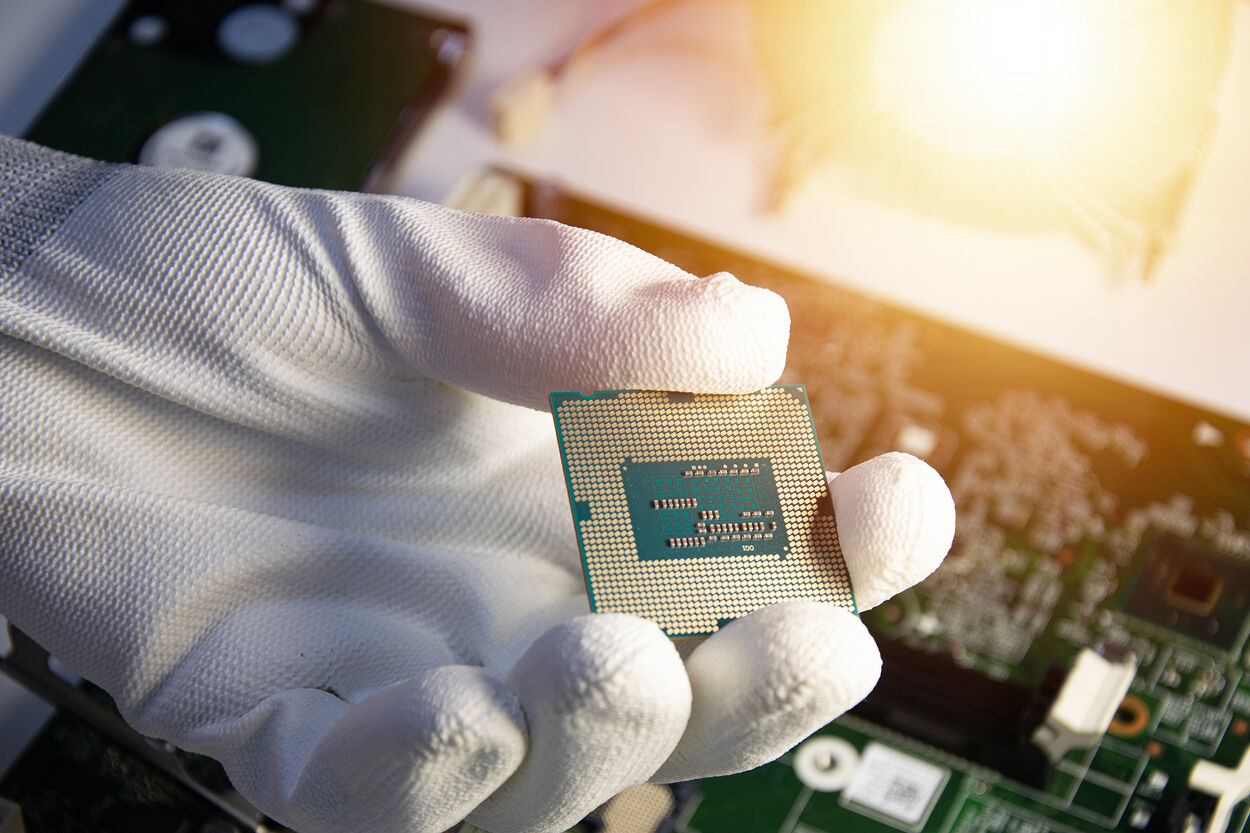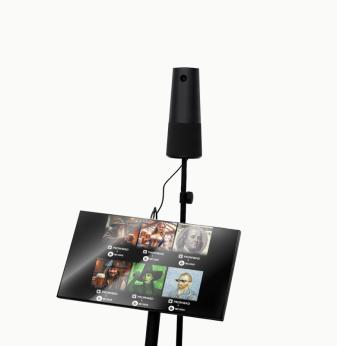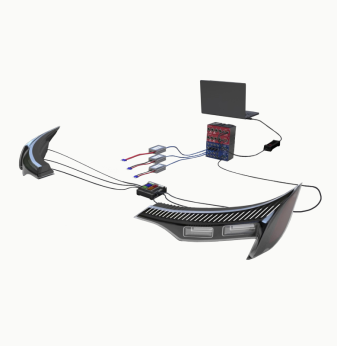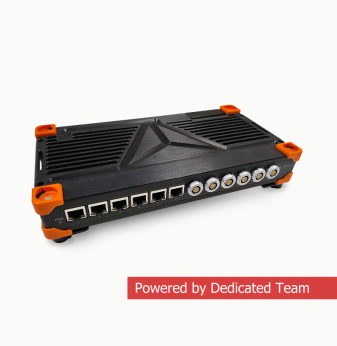Programmable Photonic Links in Embedded Systems: Roadmap to On-Chip Optics

The evolution of embedded systems has always followed one limiting factor — bandwidth. As devices like edge AI modules, industrial controllers, and in-vehicle networks handle larger data flows, traditional copper interconnects are nearing their physical and power limits. Signal integrity at multi-gigabit rates, EMI challenges, and energy costs for equalization and retiming have made it increasingly difficult to scale using electrical links alone.
The next frontier lies in programmable photonic links — integrated optical interconnects that move data using light instead of electrons. These technologies promise ultra-high bandwidth, low latency, and immunity to electromagnetic interference, all within manageable power budgets. The leap toward on-chip optics means rethinking how embedded systems are designed, packaged, and managed.
This transformation is no longer theoretical. Photonic integrated circuits (PICs), reconfigurable meshes, and co-packaged optical modules are rapidly progressing toward the embedded market. Their integration is becoming not just feasible but essential — particularly for systems that demand deterministic timing, scalability, and low energy per bit.
Why Embedded Systems Need Photonic Links
Every new generation of edge hardware faces the same bottleneck: data movement. Processors, accelerators, and sensors are producing more information than copper traces can carry efficiently. In sectors such as automotive, robotics, and edge AI, signal distances are increasing while timing budgets tighten.
Traditional copper-based interconnects require stronger drivers, higher equalization power, and complex retimers to achieve acceptable performance. At 25–56 Gbps per lane, energy consumption often exceeds 10 pJ/bit, not counting the additional heat and EMI management overhead.
Optical links, by contrast, can transmit at terabit scales over centimeters or meters with minimal signal degradation. Even more compelling, programmable photonic circuits can dynamically reconfigure wavelength paths, tune optical filters, and allocate bandwidth where it’s needed most — effectively making the physical link adaptive.
For embedded designers, this unlocks new system architectures: distributed AI compute clusters, low-latency sensor backbones, and hybrid optical-electronic fabrics that scale without thermal penalties.
How Programmable Photonics Work
A photonic integrated circuit (PIC) manipulates light through passive waveguides and active devices such as:
- Mach–Zehnder interferometers (MZIs) — for modulation and switching;
- Microring resonators — for wavelength-selective routing and filtering;
- Phase shifters — for fine-tuned reconfiguration;
- Photodiodes and modulators — for optical-to-electrical conversion.
Programmability means these elements can be tuned post-fabrication or even during runtime. Phase shifters adjust optical paths in response to control signals, creating a reconfigurable mesh that supports dynamic wavelength routing, load balancing, and real-time path optimization.
This flexibility enables adaptive topologies — for instance, rerouting bandwidth between processing clusters or reserving optical lanes for safety-critical data. It also supports co-packaged optics (CPO), where photonics sit directly beside compute dies, minimizing signal loss and power consumption.
Power, Latency, and Scalability Targets
To be viable for embedded systems, photonic links must meet three core metrics:
- Energy efficiency
Current optical interconnect prototypes achieve 1–2 pJ/bit, with next-generation designs targeting sub-pJ/bit figures. This compares favorably to advanced copper links, which rarely go below 5–10 pJ/bit once equalization and retimers are included. - Latency
Optical transmission adds only a few nanoseconds of delay across tens of centimeters — ideal for real-time control systems, robotics, and sensor fusion networks. - Temperature and reliability
Unlike data-center environments, embedded systems face wide temperature swings (−40°C to +105°C). This requires self-calibrating photonic components, robust packaging, and temperature-compensated control loops to maintain wavelength stability.
Embedded Use Cases
- Edge AI accelerators
Optical interconnects link compute chiplets and shared memory banks, eliminating bottlenecks between AI cores. Reconfigurable wavelength routing dynamically allocates bandwidth between inference workloads, reducing idle cycles. - Automotive zonal architectures
Vehicles are shifting to centralized domain controllers linked by high-speed networks. Photonic backbones provide EMI immunity and long-distance data transport for cameras, radar, and LiDAR, while programmable meshes handle redundancy and adaptive bandwidth distribution. - Industrial robotics
In factories, photonic links enable deterministic control loops across noisy environments. Their immunity to electromagnetic noise ensures stable communication even near high-current motors and welders. - Harsh-environment devices
Oil and gas, space, and defense systems benefit from optical immunity to radiation and temperature extremes, reducing maintenance and downtime.
The Roadmap: From Co-Packaged Optics to On-Chip Integration
Phase 1 — Linear Optical Links (Current)
Simple fiber or polymer optical waveguides connect embedded boards. Modulators and photodiodes interface with existing SerDes, cutting equalization power and EMI.
Phase 2 — Co-Packaged Optics (1–3 Years)
Optical I/O modules are integrated into the same package as the SoC or FPGA. This reduces signal reach to millimeters electrically, while extending optical reach to meters. Power per bit drops below 2 pJ, and control firmware manages calibration and tuning.
Phase 3 — Photonic Chiplets (3–5 Years)
Dedicated PICs share a common laser source and offer programmable routing between chiplets. Embedded systems begin using photonics for inter-die communication and high-bandwidth sensing links.
Phase 4 — On-Chip Optics (Beyond 2028)
Fully integrated optical I/O becomes part of the SoC. This enables hundreds of optical channels on a single die, each dynamically reconfigurable — the ultimate form of “optical fabric” for embedded devices.
Overcoming Key Engineering Challenges
- Thermal drift and calibration
Photonic elements shift with temperature. Systems must employ real-time heater control, phase tuning, and feedback loops to maintain alignment.
- Packaging and coupling
Efficient coupling between fiber and silicon waveguides is a major cost driver. Automated alignment, edge couplers, and integrated laser sources will be critical for mass production.
- Firmware complexity
Photonic control firmware must handle calibration, wavelength allocation, and diagnostics, often in real time. This requires integration with RTOS and monitoring stacks.
- Testing and validation
Optical inspection adds new layers of testing. Automated BER monitoring, optical power measurement, and in-field recalibration tools are essential for reliability.
- Qualification for harsh environments
Shock, vibration, humidity, and temperature cycles must be validated under automotive and industrial standards.

Industry Momentum
Chipmakers and research labs are converging on the same vision: hybrid electronic-photonic systems.
- Intel, AMD, and NVIDIA are investing in optical I/O for AI and HPC.
- Lattice and NXP are exploring FPGA and MCU-level integration of optical control logic.
- European and Asian foundries are offering multi-project wafer (MPW) runs for silicon photonics, reducing entry costs for smaller OEMs.
Standardization efforts (IEEE 802.3df, COBO, and OIF) are also extending toward shorter-reach embedded optics, signaling that the technology is approaching maturity for mid-volume markets.
What’s Next: Programmable Optics as a Software Resource
Programmable photonic fabrics won’t just replace copper — they’ll become software-defined interconnects. Systems will dynamically allocate wavelengths or adjust modulation formats based on real-time load, temperature, or fault conditions.
This convergence between optics and firmware will enable:
- Dynamic bandwidth allocation for AI inference pipelines.
- Failover routing in zonal automotive or industrial networks.
- Security isolation between data flows via wavelength partitioning.
- Predictive maintenance, using optical telemetry and self-calibration data.
In the long run, embedded photonics will merge with edge AI and network management stacks, becoming a transparent part of the digital infrastructure.
AI Overview: Programmable Photonic Links in Embedded Systems
Programmable Photonics — Overview (2025)
Programmable photonic links are driving a shift from electrical to optical interconnects in embedded systems. With tunable waveguides and reconfigurable meshes, they deliver high-speed, low-power, EMI-immune connectivity across edge AI, automotive, and industrial devices.
- Key Applications: AI accelerator fabrics, robotic control systems, zonal automotive networks, industrial automation, and sensor backbones.
- Benefits: Up to 10× bandwidth per watt improvement, reduced latency, dynamic wavelength routing, and robust communication in EMI-heavy environments.
- Challenges: Thermal calibration, packaging precision, firmware complexity, and qualification for wide temperature ranges.
- Outlook: By 2030, co-packaged and chiplet-level photonics will become standard for high-performance embedded platforms, paving the way toward full on-die optical integration.
- Related Terms: photonic integrated circuits, silicon photonics, co-packaged optics, reconfigurable photonic mesh, optical interconnects, embedded optical I/O.
Our Case Studies












